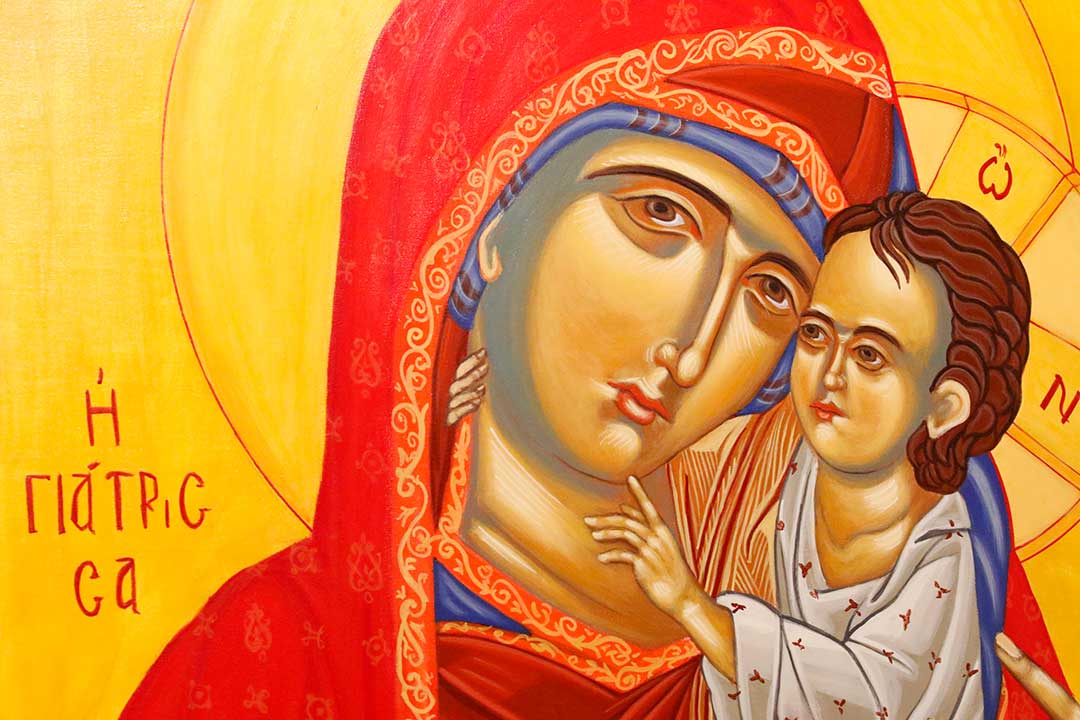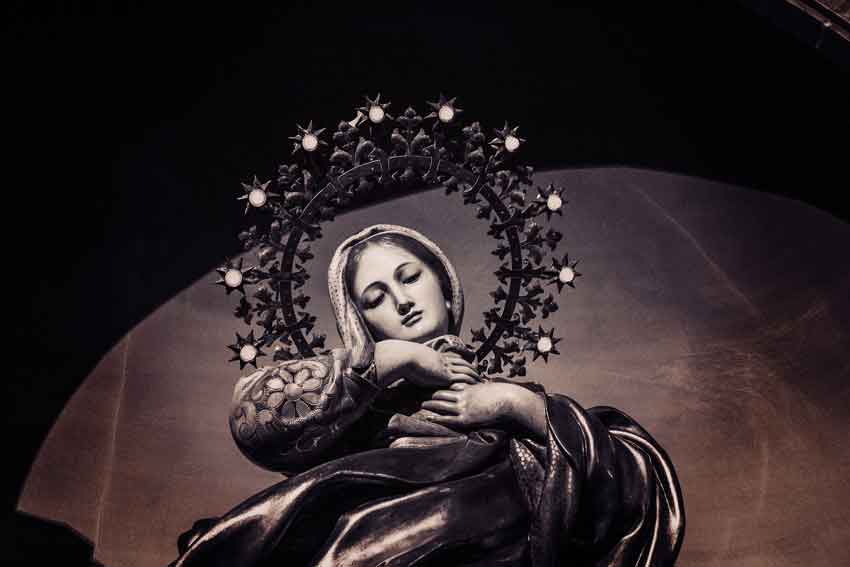
By Fr John Paul Bassil OMM
As we have begun the season of Advent in the Maronite Church, it is a perfect time to meditate on the presence of Mary, Mother of God, in the Maronite Liturgy.
For the Maronite faithful their attachment to the Blessed Virgin Mary is nothing new; Our Heavenly Mother has been accompanying our church from its foundation in the 5th Century until today.
From Saint Maroun, the Patron Saint of the Maronite Church, to Saint John-Maroun its founder, and to its current Patriarch, the Blessed Virgin has always been the companion and Patron Saint. Even the names of the Patriarchates honour her: from Our Lady of Yanouh to Our Lady of Elige, to Our Lady of Qadisha and then Our Lady of Deman and finally Our Lady of Bkerke.
Here we see the extent of the Virgin’s influence in the life of the Maronite Church; she has been engrained in the ecclesiastical tradition, from inception and throughout its persecution, as Maronites fled from one region to another, experiencing martyrdom and barely escaping the attempts by the Mamluks, the Ottomans and many others to eradicate them. From its beginnings, the Maronite Church understood the truth of faith that the Virgin Mary is an active and essential member of the Church through her distinctive mission as a mother and teacher.
As according to the Dogmatic Constitution Lumen Gentium (53-54), “Because Mary occupies the first place in the Church after Christ, even though she is close to us.”
“Throughout Maronite history, the light was always shone on Mary … To [Saint Ephrem the Syrian (+373)], the Virgin Mary is the sacred ark, the woman who crushed the head of Satan, the pure one alone in body and soul, and perfect in holiness.”
The Maronite Synod that was summoned between 2003 and 2006 (which had been an extension of the famous Lebanese Synod of 1736), issued texts and recommendations proving the Maronites’ attachment and close connection to Mary. It came to be written in the first text that, “The Maronite Church has a Marian dimension, because Mary bore us The Hope of the Universe, the Incarnate Word Jesus Christ.”.
The Blessed Virgin has a prominent role in the liturgy and the Divine Office prayers, which stems from the Syriac theological heritage. Our relationship with her, however, has become even closer over the generations. All the prevalent pious customs, fraternities and Knights of Mary (Fersen) in the community, are living evidence of this, in addition to the countless prayers that mention Mary and ask for her intercession with the choir of the apostles and saints.
The Maronite Synod speaks of the dependence of the patriarchs, bishops, priests and all consecrated people, on Mary, as they consider the Lord Jesus addressed them directly from the cross when he said to John, “This is your mother.” (John 19:27).
Every patriarch, bishop and consecrated person takes Mary as his Mother and Patron, to follow her example by obedience to God, deep prayer, serving the neighbour and caring for the children of the Church. The text tells us that the bishop, when he takes Mary “to his own” (John 19/27), has chosen the Holy Mother as his most precious treasure after Christ, and with her he is able to face challenges, and, like Mary, enters into God’s plan of salvation.

Throughout Maronite history, the light was always shone on Mary. Doctor of the Church, Saint Ephrem the Syrian (+373) wrote extensively on Marian theology. To him, the Virgin Mary is the sacred ark, the woman who crushed the head of Satan, the pure one alone in body and soul, and perfect in holiness.
While the Council of Ephesus and Chalcedon in the fifth century explained the doctrine of the person and nature of Christ, it expounded the fact that Mary is the “Mother of God”. The disciples of Saint Maroun were among the strongest defenders of this doctrine.
Consequently, the Blessed Virgin is mentioned in the divine liturgy at least twice, and in the sacraments and liturgical rites, and in particular the procession of the icon of the Virgin on her feasts and memorials. As an expression of the role of the Blessed Virgin in the outstanding plan of salvation, the Maronite liturgical year incorporates numerous memorials to Mary.
This begins with the two Sundays of the Virgin, the third and fourth Sundays of Nativity season: The Annunciation to Mary and the Virgin’s visit to Elizabeth.
In the liturgy, well-wishers also follows Christmas. The Maronite Church celebrates Praises of the Mother of God on 26 December, to “congratulate” the Virgin Mary on her divine birth.
“The Virgin Mary remains the mother of our Church, the beloved figure after her son Jesus, who accompanies us with our people from generation to generation …”
Once we reach the mystery of redemption by death and resurrection, the Maronite liturgy experiences this with the “sorrowful mother”, through her eyes and heart, standing at the foot of the cross. And at the first beat of the joyful song of the Resurrection we pray, “Mary, cease your crying, Christ has truly risen.”
For the Maronites, the season of Pentecost reveals the face of Mary, as the Mother of God but also the observant Mother of the Church, there from the birth of the church in the upper room.
The Maronite Church performs its rites, after the Feast of Pentecost and the Feast of the Apostles, on the Feast of Our Lady on 15 August, which is the feast of her ascension to heaven.
The Virgin Mary remains the mother of our Church, the beloved figure after her son Jesus, who accompanies us with our people from generation to generation, from the East and Lebanon, to the world, and her anthem remains the closest to the hearts of adults and children to sing the words of the famous hymn Ya Oum Allah: “Oh, Mother of God, tender hearted… You are our mother and our hope”.
Father John Paul Bassil, OMM is the Superior of the Maronite Order of the B.V.M. Mission in Australia
Related Articles:
